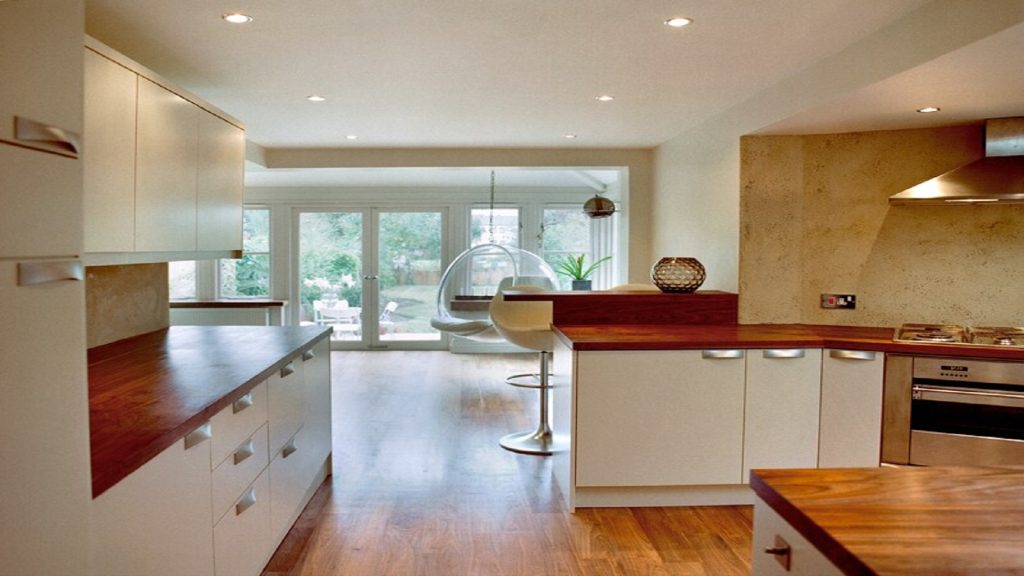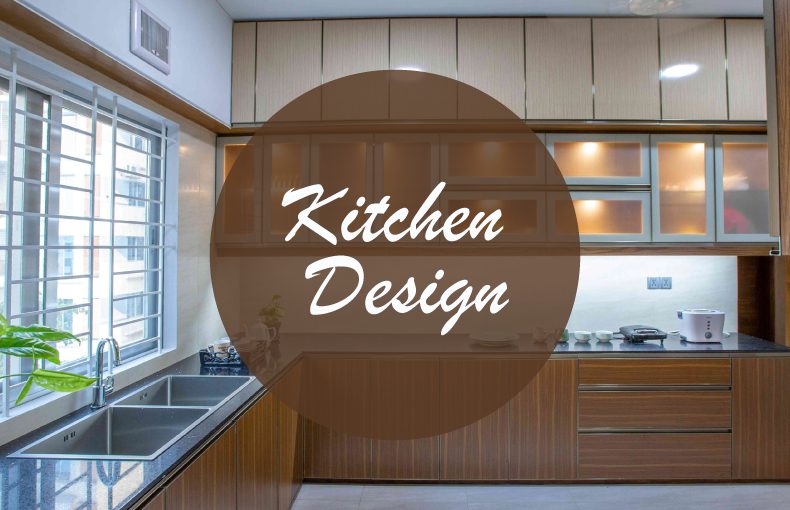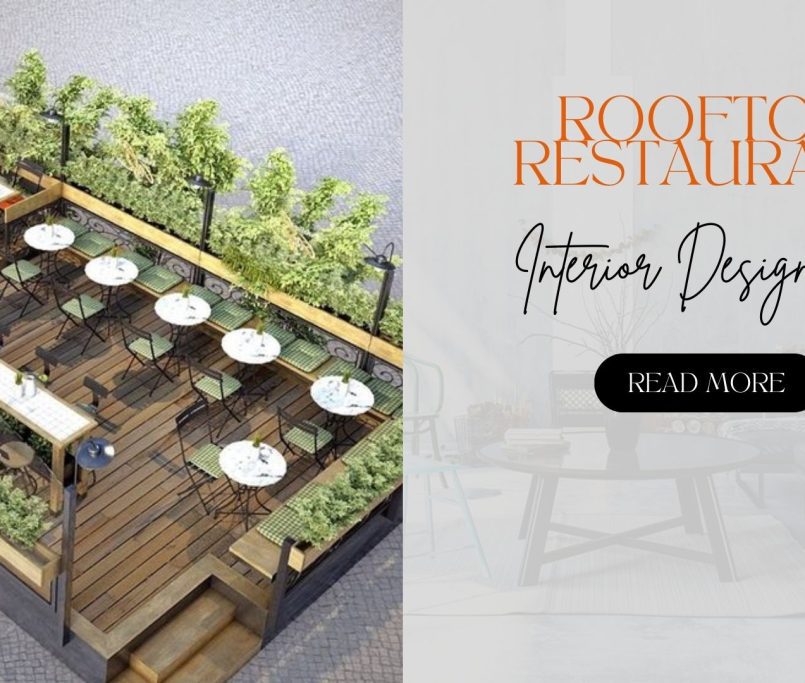Modular Kitchen Interior Design
The kitchen interior design is the most difficult space in the house to design because appliances, equipment working surfaces, and storage spaces must be carefully organized into a visually coherent and functional whole. To sure a smoothly functioning kitchen for more than one occupant, it is necessary to synthesize wide range of working and circulation scenarios. Fundamental to kitchen planning is the placement of three elements: the refrigerator, the sink, and the stove. These elements define the preparation zone, the washing zone, and the cooking zone. Together, the zones define the three points of the working triangle. In addition to mapping out a safe and efficient working triangle, interior designers must also consider storage requirements for the countless number of kitchen gadgets, dishes, and other accessories that are found in the contemporary kitchen interior design.
Type of kitchen interior design

Kitchen Working Triangle
The ideal total length of the segments that comprise the working triangle is 12 to 22 feet The layouts that follow describe how the working triangle might be best arranged for the size and shape of a particular room.
Types of kitchen Rooms:
There are a wide variety of room types in domestic, office, and commercial environment, each requiring specific design strategies, Interior designers should, at a minimum, be familiar with the design issues and potential solutions below, the best configuration for a room depends on how it will be inhabited and the potential circulation patterns through its space. Good interior design seeks to balance issues of character, such as comfort and harmony, with these practical considerations.
Single/one wall kitchen design :
The simplest kitchen organization is a single row of appliances and counter space arranged against a wall. This layout is ideal for long narrow rooms or one wall of a studio apartment where the kitchen can either be screened off or made the central focus of the space. The most practical plan should include counter space on both sides of each major appliance. The refrigerator should be placed at one end of the kitchen wall since it only needs counter space to one side – remember to specify a refrigerator with doors that open in the direction or the adjacent counter space.
Gallery kitchen interior design :
A gallery kitchen interior design has two parallel runs of counters. The sink, dishwasher, and stove should be located on the same side of the kitchen (cooking and washing zones) and the refrigerator (the preparation zone) should be scatted on the opposite wall. the counters should be at least 4 feet ( 1 219 millimeters) apart to provide adequate room for more than one cook; if the kitchen is designed for only one cook, the space between counters can be reduced to 3 feet ( 914 millimeters) . This layout is not recommended if other rooms are accessed through the kitchen.
L- Shaped or U- shaped Kitchen design :
In these layouts, the counters and appliances are organized around two or three walls. This arrangement can word in either small or large spaces; however, in larger rooms the working triangle should be kept within the optimal range of 12 to 22 feet (3 658 to 6 705 millimeters). Often in these arrangements, one leg of the L or the U forms a counter, which is ideal for casual meals. In this scenario, it is vest to design a higher counter to separate the cooking zone from the eating zone.
Island Kitchen design :
A middle workplace provides extra space for performing various cooking tasks. Depending on the preferences of the cook, the island can be designed for either preparing or cooking a meal . of all the layouts m this arrangement encourages the most socializing in the kitchen interior design. It is best used in large rooms that allow enough space between counters and island
Kitchen Washing Zone:
The Kitchen washing zone is primarily made up of the sink and dishwasher, ideally, the sink has compartments for washing and rinsing .the dishwasher should be placed immediately contact to the sink but carefully located so that there is enough room to wash dishes in the while the dishwasher is open. If the kitchen does not have a dishwasher, a drying rack should be located above the counter so that it does not take up critical counter space.
It is also important to have a waste bin close to the sink for disposing of trash prior to washing dishes. Trash receptacles are often located behind a cabinet door and underneath the sink to avoid visual clutter. Layout the cabinet for the trash can so that the cabinet door, open, does block the one dishwasher. to avoid this conflict, incorporate the trash cabinet or the opposite side of the sink from the dishwasher.
Preparation Zone:
The preparation zone consists of the refrigerator and an adjacent counter-height work space for preparing food. The refrigerator should be placed in close proximity to the pantry so that perishable and nonperishable foods are both easily accessible from the food preparation work space. There are many refrigerator /freezer combinations, each suitable for particular spaces and types of users. The size of the refrigerator should be directly proportional to the size of the kitchen interior design.
Different types of tasks are best perform on different types of surfaces: For instance, marble slabs are best for rolling out pastries , while wood counters are best for chopping . These surfaces cane incorporated in to the counter tops or not, depending on the size of kitchen the preferences of the cook, and the budget, other common counter surfaces include granite, engineered quires, concrete, stainless steel, wood tile, acrylic solid surfacing, and plastic laminate.
FAQs
- How much does it cost to remodel a kitchen?
- The cost of a kitchen remodel varies widely depending on factors such as the size of the space, the extent of renovations, and the quality of materials. On average, homeowners can expect to spend anywhere from $10,000 to $50,000 or more for a full kitchen renovation.
- How long does a kitchen remodel take?
- The timeline for a kitchen remodel depends on the scope of work and various other factors such as contractor availability, permit processing times, and product lead times. On average, a complete kitchen renovation can take anywhere from several weeks to several months to complete.
- What are some popular kitchen design trends?
- Some popular kitchen design trends include open-concept layouts, minimalist cabinetry, mixed materials, and smart appliances. Other trends to watch include bold colors, statement lighting, and sustainable design elements.
- Do I need to hire a professional designer for my kitchen remodel?
- While DIY projects can be rewarding, complex kitchen renovations may benefit from the expertise of a professional designer. A qualified designer can help optimize space, maximize functionality, and ensure a cohesive design that meets your needs and budget.
- How can I make my kitchen more eco-friendly?
- There are several ways to make your kitchen more eco-friendly, including using energy-efficient appliances, choosing sustainable materials, and incorporating recycling and composting stations. Additionally, reducing water consumption, minimizing food waste, and opting for non-toxic cleaning products contribute to a greener kitchen environment.





